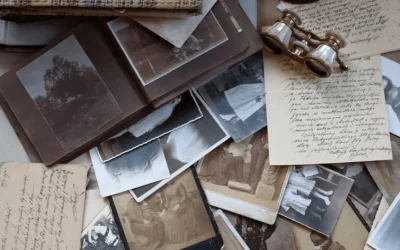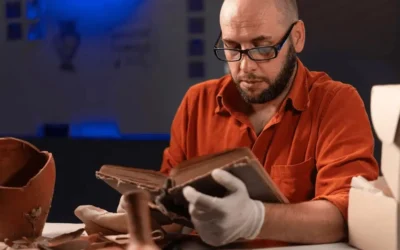The Records Continuum Model: Bridging the Gap
Margot Note
The management and preservation of records play a crucial role in the effective functioning of organizations and the preservation of cultural heritage.
The records continuum model represents a paradigm shift in theory that bridges the gap between the roles of archivists and records managers.
The model represents a departure from the traditional view of archivists and records managers operating in separate silos. Instead, it envisions an integrated approach to recordkeeping. The model acknowledges that records management and archival functions are interconnected and that the collaboration between the two is essential for a comprehensive, efficient information management strategy.
Key Elements
The model’s core is recordkeeping: managing records from their creation to their eventual disposal or long-term preservation. Throughout this lifecycle, archivists and records managers engage with each other at critical points, ensuring a smooth transition and practical preservation of valuable records.
At the point of record creation, collaboration between archivists and records managers begins. This involves setting guidelines for record creation, ensuring that records are appropriately classified, and capturing essential metadata that facilitates their management throughout their lifecycle.
A critical juncture marks the transition from active use, to inactive use, to archival preservation. Archivists play a vital role in determining which records hold enduring value and warrant long-term preservation. Meanwhile, records managers ensure that records without long-term significance are disposed of in compliance with legal and regulatory requirements.
What Archivists Want
To strengthen the model, it is essential to understand the desires of archivists. Archivists seek the ability to go off-schedule when necessary to capture records of significant historical value. This flexibility allows them to preserve records that may not fit within rigid schedules but hold critical insights into the past.
Simplified file code systems are another request from archivists. Simplicity in classification systems ensures that record creators can easily adhere to guidelines, resulting in better-organized records and more straightforward retrieval in the future.
Archivists also advocate for limited record series with different retention dates. This approach allows them to focus on the most historically significant records and not be burdened by the indefinite retention of all records.
Finally, context is paramount to archivists. Understanding records’ creation process and broader historical and social context enhances their value and ensures proper preservation.
Unsustainable Separation
Recognizing the need for collaboration and understanding the unsustainability of keeping archivists and records managers separate is crucial. In the digital age, preservation becomes a shared responsibility. Technological advancements enable archives to intervene much earlier in the record lifecycle, necessitating cooperation from the record’s creation stage.
Archivists, in particular, need access to information about electronic records’ creation process and context. This knowledge enriches the records’ significance, ensuring they are accurately preserved.
Strengthening Relationships
To foster a collaborative relationship, archivists and records managers must understand each other’s priorities. Regular communication and shared training opportunities can enhance this mutual understanding, resulting in a more comprehensive approach to information management.
Addressing fundamental questions—such as balancing immediate business needs with preserving historical records—can lead to solutions that benefit both professions. Collaborative projects that involve joint decision-making can also contribute to stronger relationships as information professionals.
United by the Continuum
The records continuum model represents a progressive, unified approach to information management, linking the roles of archivists and records managers. Both professions can effectively preserve records and the broader cultural heritage by engaging with each other at critical points in the record’s lifecycle and embracing common understandings and best practices.
This perspective challenges the traditional separation of archivists and records managers, promoting an integrated approach to digital preservation. As the digital landscape evolves, collaboration between professions becomes increasingly vital, ensuring that valuable records are not lost to history and that collective memory endures over time.
Margot Note
To learn more, please join us for Archivists and Records Managers: The Dynamic Duo, presented by Margot Note on Wednesday, October 18, 2023 at 11 a.m. Pacific, 2 p.m. Eastern. (Can’t make it? Register anyway and we will send you a link to the recording and slides afterwards). Register now or call 604-278-6717.
Never miss another post. Subscribe today!
Similar Posts
Texas Archive of the Moving Image: Interview with the Digital Archivist
I recently interviewed Grace Muñoz about her work at the Texas Archive of the Moving Image. Her work on improving the discoverability of the multimedia collection is fascinating.
How to Conduct Comprehensive Archival Surveys
Conducting a comprehensive archival survey is critical to successfully managing archival collections.
Remembering History, Moving Forward Together, with ArchivEra
The Catholic Diocese of Arlington’s Director of Archives selected ArchivEra to manage their collections of historical and cultural significance, and strike a balance between security and access.
Unveiling Archival Impact
The transformative power of storytelling depends upon the strategic choices that top archival performers make and the shift from being record-keepers to change agents.




Leave a Comment
Comments are reviewed and must adhere to our comments policy.
0 Comments